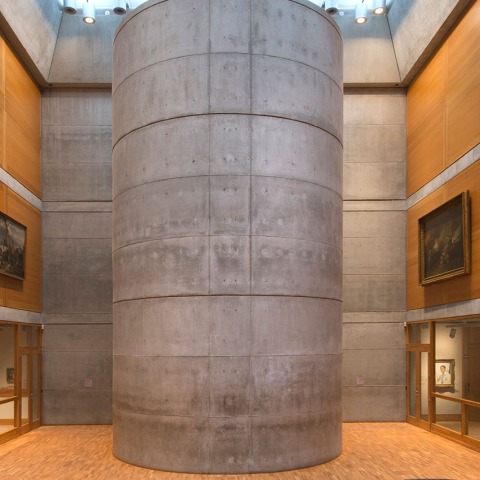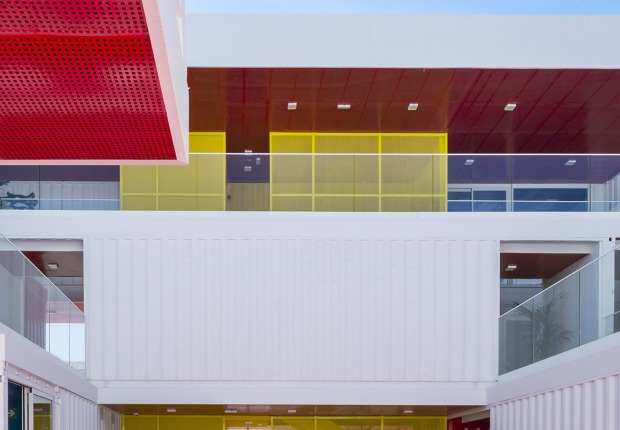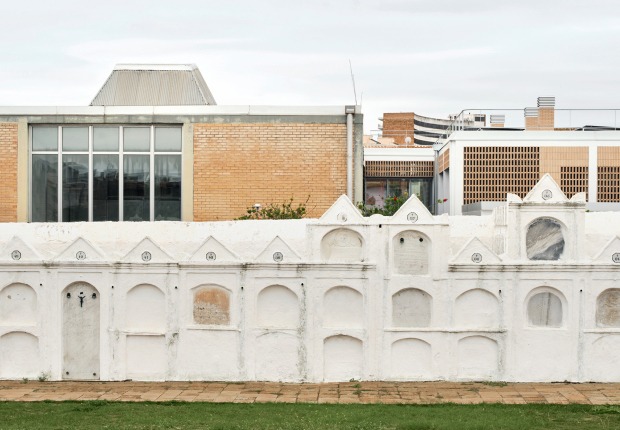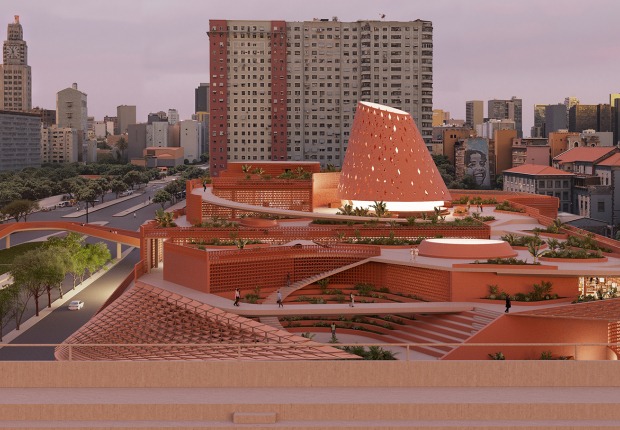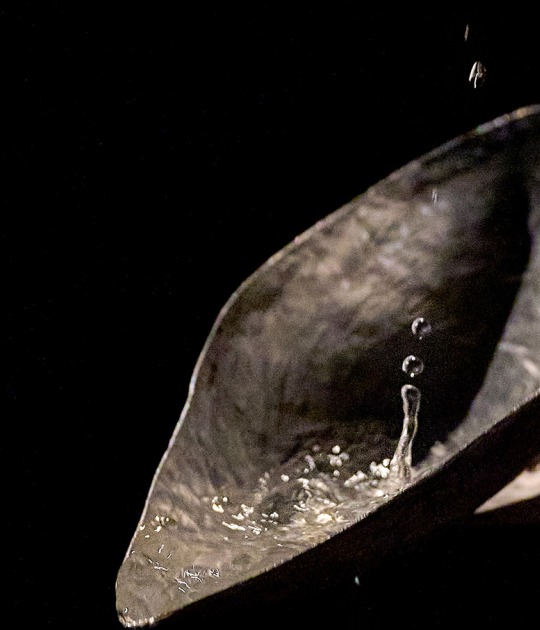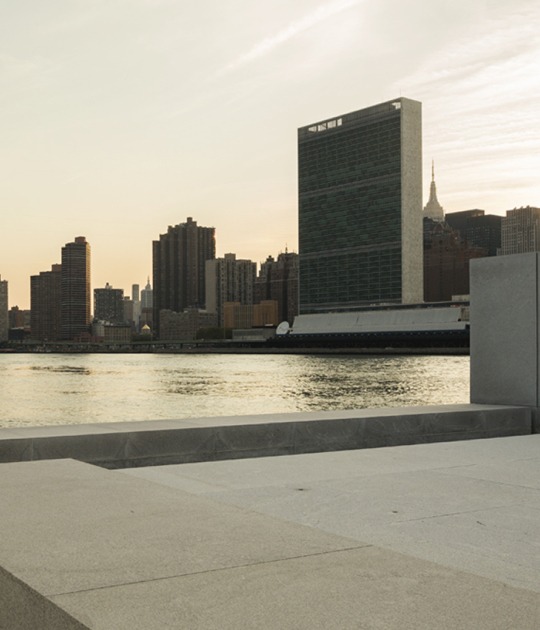The Yale Center for British Art was designed by the American architect Louis I. Kahn (1901–1974). Located across the street from his first major commission, the Yale University Art Gallery (opened in 1953), the Center was Kahn’s final building and was completed after his death. It was the first museum in the United States to incorporate retail shops in its design.
The Center’s exterior of matte steel and reflective glass confers a monumental presence in downtown New Haven. The geometrical four-floor interior is designed around two courtyards and is comprised of a restrained palette of natural materials including travertine marble, white oak, and Belgian linen. Kahn succeeded in creating intimate galleries where one can view objects in diffused natural light. He wanted to allow in as much daylight as possible, with artificial illumination used only on dark days or in the evening. The building’s design, materials, and skylit rooms combine to provide an environment for the works of art that is simple and dignified.
Building Conservation Project
After more than a decade of research on the history of the design and construction of Kahn’s final building, the reopening of the Center marks the completion of a three-phase renovation plan, during which the Center was closed to the public. The first phase of work included the rehabilitation of the Center’s exterior Lower Court (2008–2011) and extensive repairs to the adjacent Lecture Hall lobby (2011–2013). This was followed by two additional phases addressing the building’s interior spaces: the second phase focused on refurbishing the areas used by the departments of Prints & Drawings and Rare Books & Manuscripts (2013); the third phase included enhancing the Center’s public spaces (namely the galleries and Lecture Hall), extensive building-wide mechanical and electrical upgrades, and improvements to fire protection, security systems, and accessibility (2015–2016).
Project Description
The Yale Center for British Art, an iconic modern building in New Haven, Connecticut, designed by the American architect Louis I. Kahn to house Paul Mellon’s extraordinary gift to Yale University, reopened to the public on May 11, 2016, after the completion of the third phase of a multi-year building conservation project.
Led by Knight Architecture LLC, this was the most complex building conservation work undertaken at the Center to date, comprising the entire structure, from roof to basement. It renewed the Center’s public galleries, internal systems, spaces, and amenities, and provided an opportunity to reimagine and reinstall the Center’s renowned collections of more than five centuries of British art.
